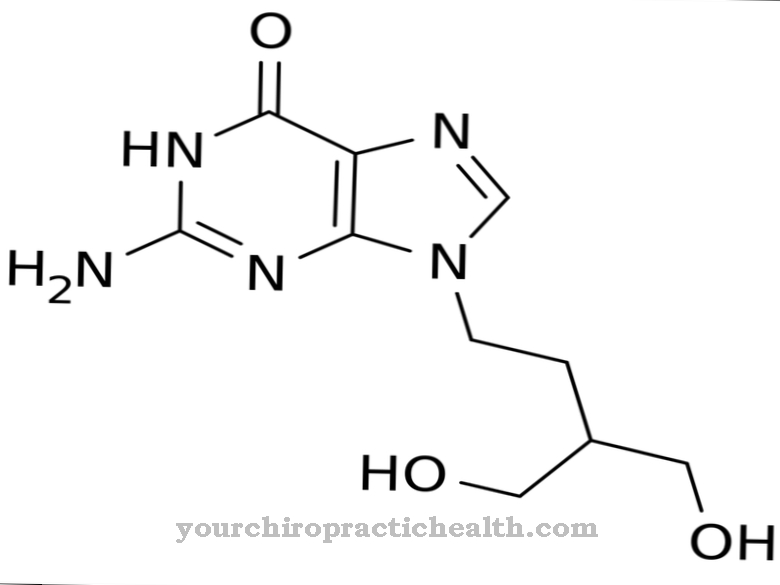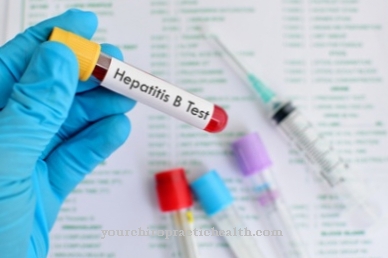Rituximab is a drug from the drug class of cytostatics. It is a monoclonal antibody that is mainly used in the treatment of malignant lymphomas.
What is rituximab?
Rituximab was developed by Lee Nadler at the Dana-Farber Cancer Institute in the 1990s. It was the first antibody approved worldwide for the treatment of cancer. In the EU, Roche sells Rituximab under the trade name MabThera®.
The biotechnologically produced drug is mainly used in the EU for cancer immunotherapy. However, it is also approved for the treatment of autoimmune diseases. Side effects are quite common when taking rituximab. More than half of cancer patients experience a fever, rashes or difficulty breathing. The substance is better tolerated by patients with rheumatoid arthritis. Serious side effects such as Stevens-Johnson syndrome or toxic epidermal necrolysis are rare.
Pharmacological effect
Rituximab is a monoclonal antibody. The IgG kappa immunoglobulin is directed against the surface antigen CD20. This surface antigen is largely found on the surface of B lymphocytes. CD20 is found in almost all B-cell neoplasms. The use of rituximab in cancer is only useful if the cancer cells have the surface molecule CD20. In these cells, rituximab binds to CD20. This creates a complex that mobilizes the body's own immune response.
Destruction of the expressing cells is initiated via three different mechanisms of action. On the one hand, programmed cell death (apoptosis) is initiated in the affected cells. In the process, the cells first detach from the tissue. They become increasingly eosinophilic in color and become smaller. Blisters form on the cell membrane. The cell nucleus is also becoming increasingly dense and smaller. At the end of apoptosis, a small apoptosis body remains, which is removed by phagocytosis. With programmed cell death, there are no inflammatory reactions.
In addition to apoptosis, complement-dependent B-cell lysis also develops. The various factors of the complement react. The complement system is a cascade-like system of plasma proteins. At the end of the cascade, these trigger an antibody response in which the affected cells are attacked. This is followed by an inflammatory reaction with eventual destruction of the cells.
The third mechanism of action is based on antibody-dependent cellular cytotoxicity. Rituximab attracts macrophages, granulocytes, and natural killer T cells, which eliminate the affected cells.
Medical application & use
Rituximab is mainly used to treat cancer. The drug is part of the standard therapy for low-grade malignant and follicular non-Hodgkin lymphomas. Non-Hodgkin's lymphomas are all malignant diseases of the lymphatic system that are not Hodgkin's disease. The lymphomas express themselves as non-painful enlargement of the lymph nodes, fatigue, weight loss, fever, night sweats or an increased susceptibility to infections.
In these cases, rituximab is usually combined with conventional chemotherapy. The CHOP scheme is often used. It includes the drugs cyclophosphamide, daunorubicin, vincristine and prednisolone. Studies show that the combination of the CHOP protocol with rituximab has a positive effect on prognosis.
Rituximab is also one of the most important drugs used to treat transplant-associated lymphoma. These are lymphoma-like malignant diseases that occur after organ or stem cell transplants.
Rituximab is also used in combination with the drug bendamustine to treat advanced chronic lymphocytic leukemia. However, more recent studies indicate that the treatment results improve when rituximab is combined with cyclophosphamide and fludarabine.
When the standard drugs and the initial TNF-α inhibitor fail, rituximab is also used to treat rheumatoid arthritis. Rheumatoid arthritis is a chronic inflammation of the joints, which was also previously known as rheumatoid arthritis. Usually the finger joints are affected. In many patients, two infusions within two weeks can provide good improvement in symptoms over a period of one year. A treatment interval of six months is recommended. Further infusions can maintain or improve the success of the treatment.
Another indication for the use of rituximab is membranous glomerulonephritis. The chronic inflammatory disease of the kidney corpuscles is based on the formation of antibodies against the proteins of kidney cells.
You can find your medication here
➔ Medicines to strengthen the defense and immune systemRisks & side effects
In oncology, more than 50 percent of patients develop adverse effects. These include fever, difficulty breathing, rashes, and chills. The severe symptoms are probably caused by the massive decay of destroyed cancer cells. Many cytokines are released during this breakdown. Cytokines are proteins that play an important role in immunological reactions and inflammatory processes.The symptoms that arise during the decay are therefore also summarized under the term cytokine release syndrome. The syndrome mainly occurs in patients with a large tumor mass. These side effects usually improve as treatment progresses.
Individual cancer patients may develop progressive multifocal leukoencephalopathy (PML) over the course of treatment. The brain is attacked by the JC virus due to an immune deficiency. The opportunistic viral infection is always fatal. The majority of PML cases occur in patients with lymph node cancer and during concomitant treatment with immunosuppressive cytotoxic drugs. PML cases are also known in patients with autoimmune diseases.
Serious side effects such as Stevens-Johnson syndrome and toxic epidermal necrolysis occur in less than 0.01 percent of patients treated.
























.jpg)



